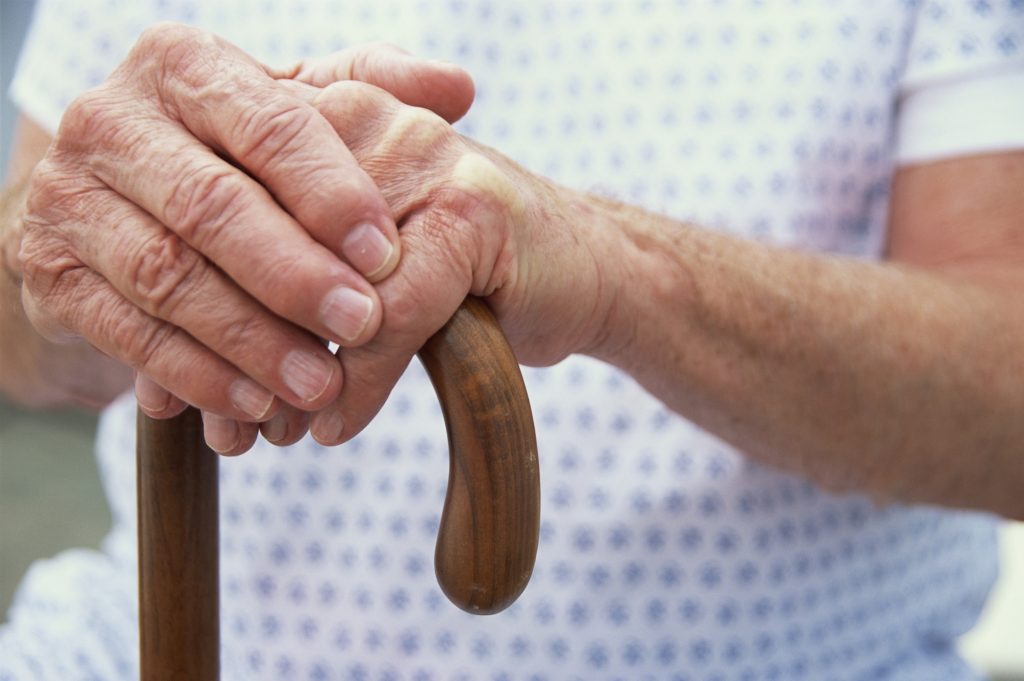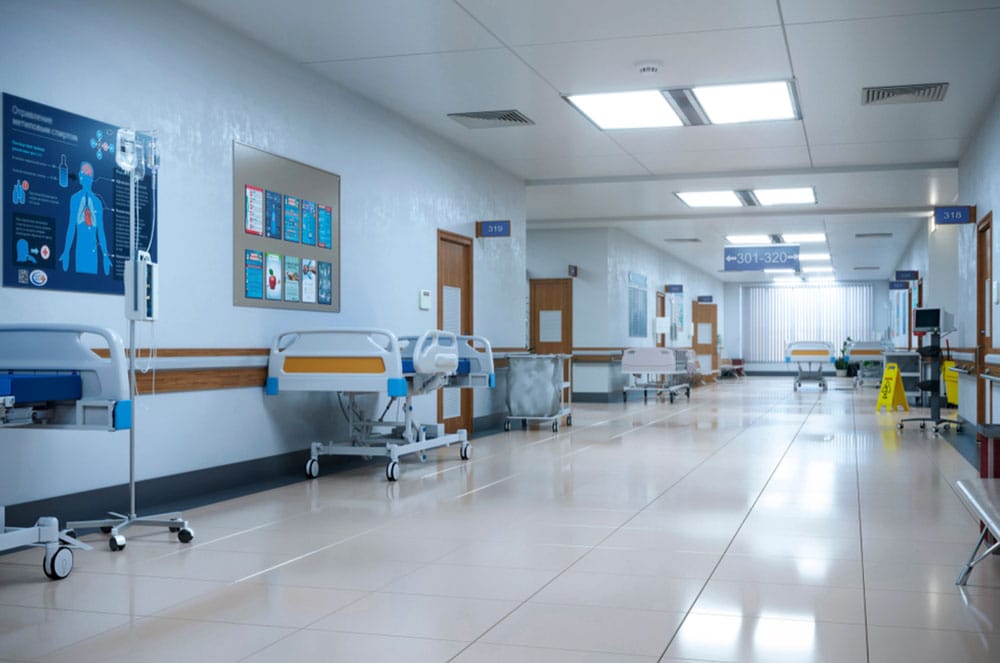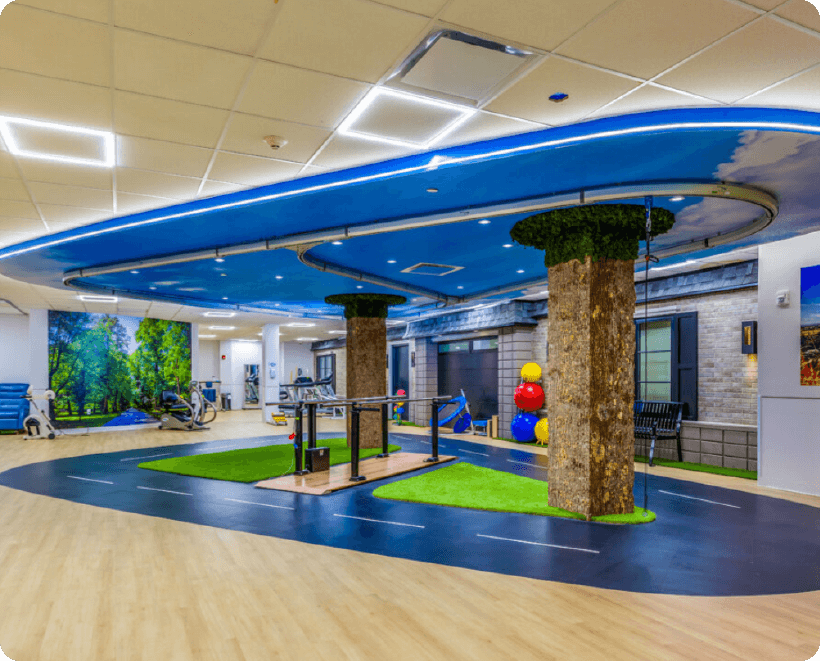Preventing Falls in Hospitals: Strategies for Patient Safety

Preventing falls in hospitals are a serious concern, often leading to injuries, complications, or even lawsuits. Healthcare providers, administrators, and staff must implement effective strategies to prevent falls and ensure patient safety. In this blog, we will explore various strategies that hospitals can take to optimize patient care and minimize the risk of falls.
Individualized Fall Risk Assessments

Performing an individualized fall risk assessment is essential to identify patients who are at a higher risk of falling while in a hospital setting. These five steps will allow you to conduct an effective assessment:
1. Gather Patient Information:
Collect comprehensive information about the patient’s medical history, current health status, and any previous incidents of falls. This information can include age, medical conditions (such as diabetes, cardiovascular diseases, or neurological disorders), recent surgeries or procedures, medications, cognitive impairments and mobility limitations.
2. Use a Standardized Fall Risk Assessment Tool:
Utilize a fall risk assessment tool to systematically evaluate the patient’s fall risk factors. Commonly used tools include the Morse Fall Scale, the Hendrich II Fall Risk Model, and the STRATIFY tool. These tools consider factors such as age, history of falls, cognitive status, mobility, and medication usage to calculate the patient’s fall risk level.
3. Evaluate Mobility and Gait:
Assess the patient’s mobility and gait to determine their ability to move around safely. Observe how the patient walks, stands up, sits down, and turns. Note any difficulties in balance, strength, coordination, or unsteady movements. Assess the patient’s ability to transfer from bed to chair and vice versa.
4. Consider Medications:
Review your patient’s current medications and identify any that may contribute to fall risks. Some medications may cause dizziness, orthostatic hypotension (a sudden drop in blood pressure upon standing), or cognitive impairment can increase the likelihood of falls. Collaborate with your patient’s healthcare team to make necessary adjustments or modifications to the medication regimen.
5. Collaborate and Document:
Involve your patient’s care team in the assessment process, including doctors, nurses, physical therapists, and occupational therapists. Document all findings, risk factors, and observations in the patient’s medical record. Ensure that all relevant staff members are aware of the patient’s fall risk status and the recommended interventions to mitigate the risks.
6. Develop a Personalized Care Plan:
Based on the assessment results, work with the interdisciplinary team to create an individualized care plan tailored to the patient’s specific needs. This plan should outline preventative measures, interventions, and strategies to reduce fall risks. It may include recommendations for assisted mobility, frequent checks by healthcare providers, patient and family education, and environmental modifications.
Environmental Modifications

Hospitals should be designed and maintained with patient safety in mind. Some ways your facility can ensure patient safety includes:
- Ensuring well-lit corridors
- Keeping hallways and pathways clear
- Minimizing tripping hazards like clutter and slippery surfaces
- Installing adequate handrails, grab bars, and non-slip flooring in areas like bathrooms and patient rooms
Ensuring your facility has assistive devices plays a crucial role in enhancing the safety and mobility of fall risk patients. These assistive devices are commonly used for patients at risk of falling:
1. Wheelchairs
Wheelchairs are essential for patients with severe mobility issues or those who are unable to walk independently. Manual wheelchairs are self-propelled devices, while motorized wheelchairs are battery-powered and provide greater ease of movement. Wheelchairs help prevent falls by offering a secure and controlled mode of transportation.
2. Bedside Rails and Grab Bars:
Bedside rails and grab bars are installed in hospital rooms and bathrooms to assist patients in getting in and out of bed or navigating restrooms safely. They provide patients something to hold onto for support, reducing the risk of falls when transitioning from a sitting to standing position or while moving around the room.
3. Orthotic Devices:
Orthotic devices are specialized braces or supports that assist patients with joint instability, weakness, or impaired mobility. For example, ankle braces can provide additional stability for patients with weak ankles, reducing the risk of falling or stumbling. Knee braces, back braces, and other orthotic devices can also be used based on the patient’s needs.
4. Walking Aids:
Walking aids are devices that provide stability and support to patients with impaired balance or mobility. They include items like canes, crutches and walkers. Canes are useful for patients who need mild support, crutches offer more stability for those with leg injuries, and walkers provide broader support and stability for patients with greater mobility challenges.
5. Overhead Track & Harness Systems

Overhead track and harness systems, like the Solo-Step, provide numerous benefits for patients who suffer from balance, coordination, and strength issues. Overhead track systems support patients during rehabilitation training, allowing them to rebuild their balance and strength quickly and safely. While in the Solo-Step Overhead Track and Harness System, your patients are protected from falling during therapy. Some other benefits of the Solo-Step System include:
- Increased confidence during rehabilitation
- Decreased fear of falling
- Protection from fall related injuries
- Faster recovery times
- Increased therapist safety
- And more
Click here to learn more about the Solo-Step Overhead Track & Harness System!
Comprehensive Staff Training

Properly trained healthcare professionals are the first line of defense against patient falls. Hospitals should provide comprehensive training to all staff members, including nurses, doctors, aides, and even administrative personnel. Training should cover:
- Fall risk assessments
- Identifying patients at high risk
- Interventions for falls
- How to use fall prevention equipment
Regular Monitoring and Review
Fall prevention strategies should be an ongoing process. Hospitals should regularly review their protocols, assess the effectiveness of interventions, and make necessary adjustments based on real-world data and feedback from staff and patients.
Multidisciplinary Collaboration
Fall prevention is a collaborative effort that involves various departments within a hospital. Collaboration between nursing, medical staff, physical therapy, and occupational therapy can provide a holistic approach to patient safety.
Continuous Improvement
Hospitals should strive for a culture of continuous improvement. Regularly analyzing fall incidents, near-misses, and patient feedback can lead to the identification of trends and areas for improvement in fall prevention strategies.
Preventing falls in hospitals requires a multifaceted approach that combines staff training, patient assessment, environmental modifications, communication and technology. Implementing these strategies can significantly reduce the risk of falls and ensure the well-being of your patients. Patient safety should always remain the top priority, and proactive fall prevention measures are a crucial step towards achieving that goal!
For more information about the Solo-Step Overhead Fall Prevention System, click the button below!